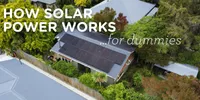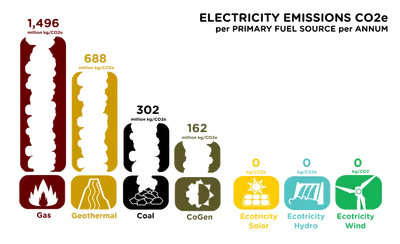Keep it up New Zealand! Your Emissions are Dropping!!
20/12/2022
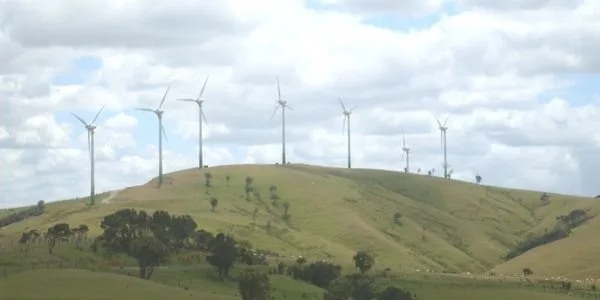
Energy is a way of life.
It is incorporated into nearly everything we do. It heats and powers our homes, transports us, makes food and goods for us to consume. Without it we would be lost, we rely on having a constant supply of energy.
The one downside to energy use, is where it comes from, and this is where Ecotricity is making a difference.
The energy sector contributes about 41% of New Zealand’s total emissions, with almost half of that coming from transport. Energy sources like oil, coal, gas, geothermal and cogeneration are major emissions producers that are significantly contributing to climate change.
Thankfully, at Ecotricity we only use 100% renewable and carbonzero certified wind, hydro and solar energy sources to power New Zealand. These sources don’t produce any emissions while generating energy for the country, and any emissions associated with the construction, maintenance, and deconstruction are accurately measured, calculated, and offset by us through Toitū carbon credits.
Even though the battle for clean renewable energy is a long one, things are starting to look greener as we introduce new renewable energy sources. In the last year New Zealand’s emissions have started to drop. Let’s look at some numbers.
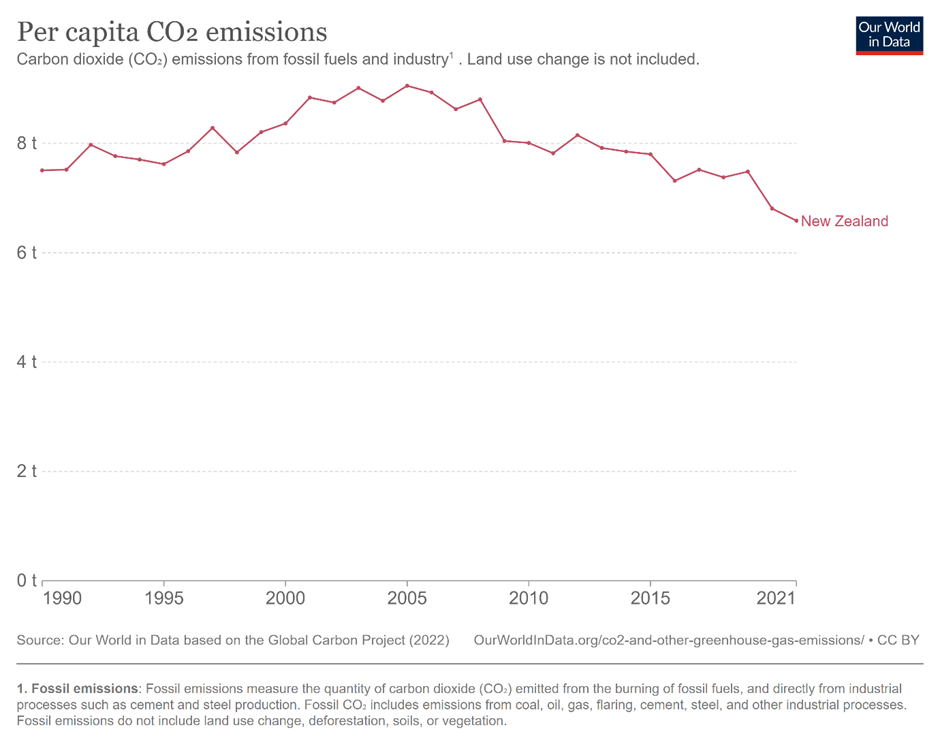
In the 12 months preceding, New Zealand’s CO2 emissions, on a per capita basis, have dropped from 6.81t to 6.59t, compared to 8.15t in 2012.
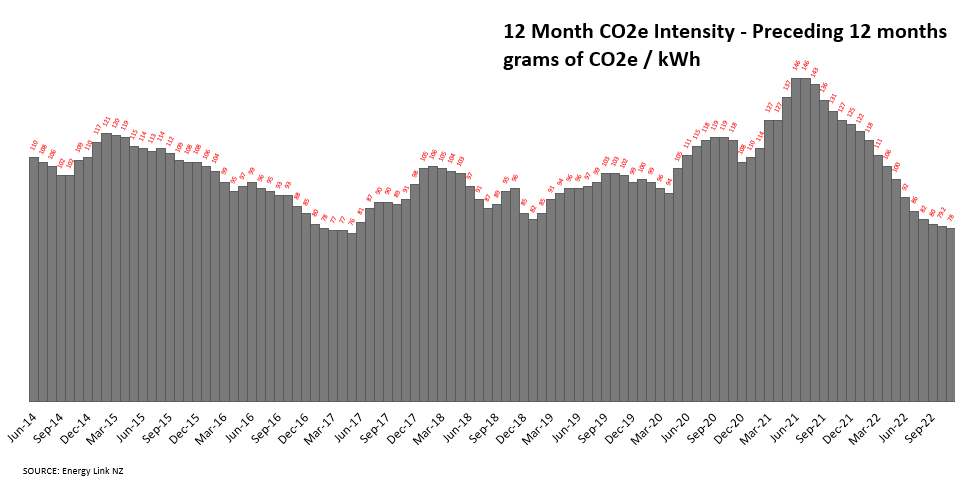
The graph above shows the amount of CO2 emitted per kWh of electricity. This is calculated on national average electricity CO2e intensity per kWh for the preceding 12 months. This changes from year to year and depends greatly on the amount of rainfall in hydro dam catchments. In November 2021 the figure was 127g of CO2e per kWh, and in November 2022 the figure was 78g of CO2e per kWh, a reduction of 40%, which is an amazing result!
So, what has changed?
There's been a bit of rain recently, but that hasn't stopped the massive rise in solar installations, more New Zealanders are investing in solar panels for their homes and workplaces. As of November 2022, 44,423 grid-connected solar power systems are currently generating clean, renewable energy for New Zealand. This is a massive jump compared to August 2013 where there were only about 1,433.1 In November, solar generated 246 MW of power in New Zealand. Compare that to November 2019 at only 112 MW, that’s a massive jump, almost adding the equivalent of a Tekapo Hydro Dam to the grid (as that’s around 125 MW).
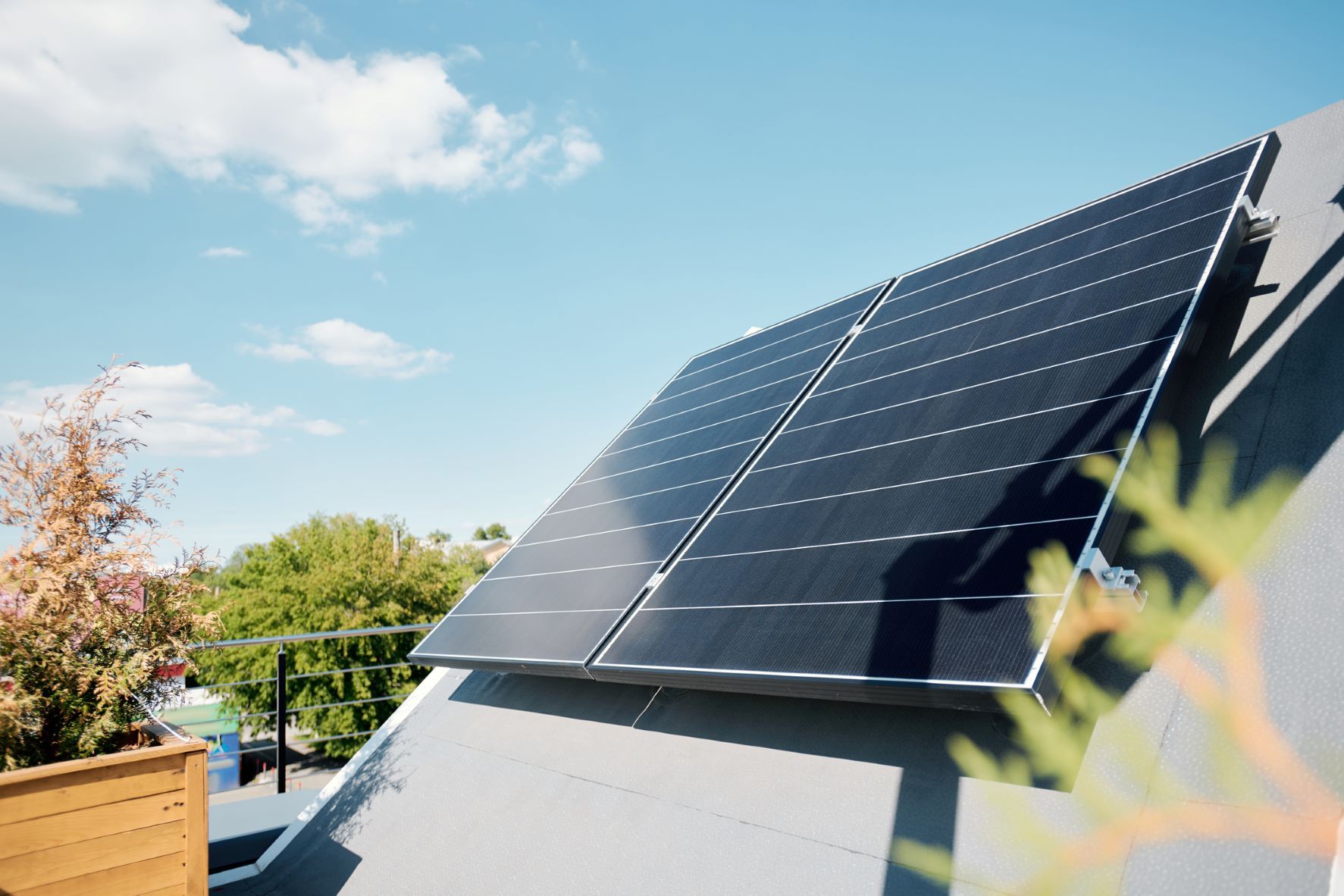
What does the future hold?
Transpower are working on a strategy to implement renewable energy zones around NZ, starting in Northland. This is a way of connecting new renewable energy generation sites together, like wind and solar, so they all share one connection to the national grid, cutting costs. According to Transpower, Northland has the capacity to build up to 2GW of new renewable generation, enough to power 375,000 households, but the current infrastructure won’t allow that new energy to be carried to where it is needed, and the connection costs are too high. So, by creating renewable energy zones, multiple new renewable energy generation sites can share that cost. The future for new renewables is looking good! Watch the explainer video here.
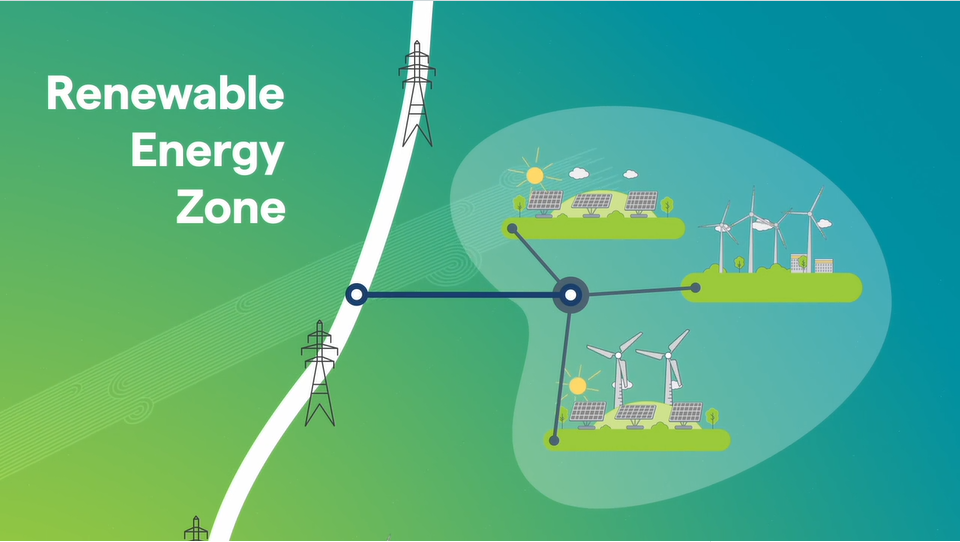
The New Zealand Government has a long-term vision for NZ to use 100% renewable energy by 2050, 50% by 2035, but have an aspirational target of 100% by 2030. They predict “By 2050, our energy system is highly renewable, sustainable, and efficient, and supports a low-emissions and high-wage economy. Energy is accessible and affordable and supports the wellbeing of all New Zealanders. Energy supply is secure, reliable, and resilient, including in the face of global shocks.” 3
So, what do you think? Will we reach the government target? We are optimistic, aiming for 2030 100% renewable energy. If you want to help make a difference, spread the word about electricity emissions and get your friends and family joined up to clean, 100% renewable, carbonzero certified electricity for their homes and businesses, with Ecotricity.
References:
- https://www.emi.ea.govt.nz/Retail/Reports/GUEHMT?RegionType=NZ&MarketSegment=All&Capacity=All_Total&FuelType=solar&Show=Capacity&seriesFilter=NZ&_rsdr=ALL&_si=_db_Capacity
- https://www.transpower.co.nz/projects/renewable-energy-zones
- https://environment.govt.nz/publications/aotearoa-new-zealands-first-emissions-reduction-plan/energy-and-industry/
- https://www.energymix.co.nz/our-consumption/new-zealands-consumption/



